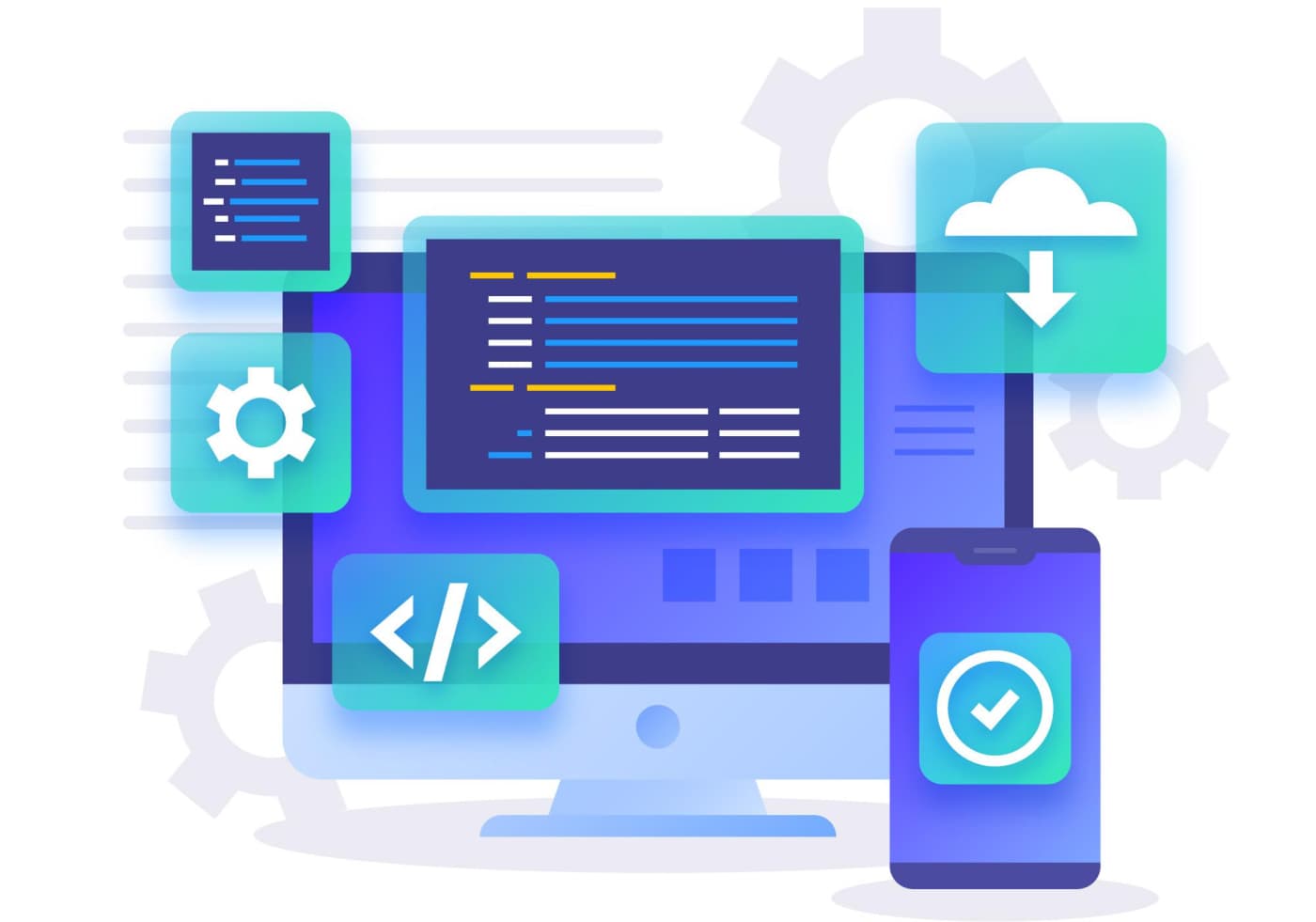5 Myths About Native Mobile App Development
August 3, 2022
Alex Shubin | Founder & CEO at SDA

Mobile applications have become a constant companion in our lives. With their help, we have fun and simplify our lives, make purchases or order certain services online, promote our business, increase our customer base, and multiply our profits.
Annually the quantity of mobile apps is increasing. According to Statista Digital Market Outlook, today, we are ready to pocket our whole life. In 2022, in the first quarter, in the App Store 2,110,063 apps are open to download, and 3,298,329 apps are downloadable in the Google Play Market.
Statista assesses that proceeds in most segments will extend over the next few years and achieve about $613 billion by 2025, and 95% of purchases will be online. So if you have your own business, it is long overdue to move it to a digital platform.
Are you keen to build your mobile app from scratch? Sure thing! And today we will talk about how to do it. The number of mobile users is growing every day. A mobile app is a great option for a startup. A competent entrepreneur cannot fail to notice this trend and will do everything to join it.
The main point that will spring to your mind is what development technology should be used to create an app? Undoubtedly, many people will immediately come to mind picking a native development, since previously it was considered the best, but is it so now? Let's find out together.
Today we will dispel the most typical myths related to native mobile app development.
Do not let them get in your way or mislead you.
1. Native development is more reasonable and profitable
There is no such place since the native method is for developing user apps for Android or iOS. These apps have different technological architecture and software. Therefore, its development price will be higher in comparison with apps in React Native.
After all, you cannot deploy the same software on various platforms, and it takes longer for developers to transform and rewrite the code, which increases expenses and the time of implementation. If a company desires to create separate apps for each platform, it might be bound to hire extra specialist developers.
For example, one programmer will focus on iOS app engineering while the other will focus on Android, which further increases the costs.
Despite the considerable list of benefits of native, clients do not always want to spend time and money on their development, enlisting several masters in the creation procedure. There's no wonder the cross-platform approach is more affordable than the native one.
Building React Native apps without losing quality can be 30-50% cheaper than the budget target now, and all this is due to code reuse and prompter development, which directly affects the app price.
Also, regarding React Native, you may have heard the myth that more experience is required to achieve high performance, but this is not so. For example, RN tends to run at 60 frames per second. In most cases, cross-platform apps can work to the same criteria as native, provided the programmers have sufficient skills and experience.
Therefore, the best option in such cases is React Native, which permits you to make apps for any platform using standard web technologies. At the same time, implementation can be created by one person who has the necessary knowledge and experience.
In fact, based on one development, you will get two apps for popular operating systems, spending less time and money on it.
2. Native development is always better
You cannot say that native is always better because, in reality, it is not like that anymore. By all means, it used to be so, but cross-platform technologies made progress. Everything rides on the team, depending on who is in it. It is far from a secret that clients often complain and usually regret that they decided to save a lot of money and take a team from South Asia.
So what kind of quality can we talk about if such people do not do their work properly? Or if the developer learned how to do native development only two months ago, did it twice and immediately forgot how to do it correctly just because of the lack of experience? And if the app works, it may break on the third day, for example, because all certain criteria and nuances in its creation will not be taken into account.
While using native development, you can find some differences in navigation and design between iOS and Android, which are eliminated by default with React Native due to the shared codebase. It helps develop a consistent app brand identity across both platforms with less effort than if it was created in native development.
When you work on two identical apps separately, there can be problems with the API: differences in versions for various platforms. And due to RN, development allows you to copy all the UI elements simply.

3. Native development covers a vaster user audience
One of the great virtues which reduce the cost of developing React Native apps is popularity and community. RN has an enormous audience, and you do not have to determine which audience to target (iOS or Android users), as the cross-platform software works on both giving you access to a more extended user base. Cross-platform is also preferred for B2B apps where deployment time is of great importance.
As for native apps, we want to add that users do not want to install them. According to Google statistics, 50% of smartphone users are more likely to use a company or brand's mobile site because they do not want to download an application.
React Native offers more opportunities for programmers to get a wider audience as such apps reach users of all types and mobile devices, regardless of their OS. It is significantly more cost-effective for the business than being on just one platform. If you immediately need to reach a larger audience and the app functionality is not complicated, it is easier and cheaper to use React Native.
4. Technical support for native development will be easy
Releasing an app is only a tiny part of the story. Maintenance is necessary for the smooth operation of the app and the maintenance team to fix bugs and issues when the implementation process is completed.
For the successful operation of the app, it is necessary to engage in advertising, analyze user feedback, release updates and fix bugs. You need to make great efforts to develop and improve your product – otherwise, there is no point in creating it, and using native development for two platforms takes twice as much time and resources.
Native app development requires high maintenance costs. Also, native development has difficulties with updates and maintenance. You will have to handle various builds on diverse frameworks. Since a native application is a complicated project that demands professional development and support, it will require significantly more fees than, for example, React Native.
The development flow of a cross-platform app is simpler. If you need to fix something, update it, this is done immediately for all platforms. With each release of a new feature for Android or iOS, it takes some time to modernize both apps to support the new features, while RN applications release updates to the stores faster.
5. Native development is a cure
The native process is considered the gold standard of the mobile app framework, but is it actually so? The speed of native development is slow. You cannot reuse native code for another platform and make mobile apps. Since app implementation targets only one platform, it can lead to wasted opportunities, especially if additional frameworks are not considered in advance. Admittedly reducing the target market can lead to a loss of earnings.
In this case, we advise building apps in React Native as it will reduce the time it takes to write the app. As mobile developers use the same codebase for multiple frameworks, you will break into the market faster in this way.
Another disadvantage of native development is the increase in the number of programmers. Bringing in more development teams is also a development drawback. So you will have to spend more time with each group in the context of coordination.
You will also have to explain the functionality and essentials according to each framework to carry out your work. If you decide to develop an app in React Native, you do not need to clarify everything individually because one app can do all your work on each platform.
In conclusion, we would like to add that application developers should exercise due care in the app development approach, regardless of baseless myths. After all, denying them native development remains a definitely good solution for highly specialized niches, in applications with an enormous number of integrations and customization, but just stop sticking to it, even if you were told so.
Remember you have a choice and that creating a mobile app in React Native is not a challenging task. Building your mobile app is not as expensive as people think. It is just a matter of investing at the right time and place.
As you have noticed, the differences between RN and native development are pretty obvious. Nevertheless, if you want to build a good app really quickly, efficiently and at a low cost, test a hypothesis or get a new round of investments, then React Native is definitely suitable for building a mobile application. We believe it is the best decision to choose React Native for your application.
If you still hesitate, contact us. Our team will help you. You may be sure that we will find the best solution for you.
